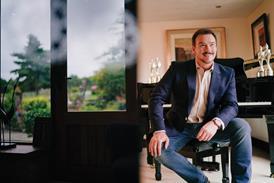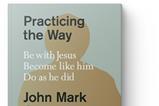Church as we know it changed irrevocably during the pandemic and many of us are still embracing the online options available to us. But if church-at-home is going to be sustainable and fruitful, says Chris Goswami, Christians have some serious questions to ask themselves

Another Sunday morning service is over. Today, our on-site congregation was around 60 per cent of pre-pandemic levels, but with fewer chairs out, it looked decently full. During the afternoon, I noticed the number of views of the service on YouTube. As usual, the number is surprisingly high. Not the ridiculously high numbers we saw in the heady days of Spring 2020, but still intriguing. I find myself asking the same questions: Who are all these people? And will they ever attend physical church?
In these dark winter mornings, church from home is easy and convenient, and it doesn’t look like this trend will end just because the pandemic ends. Some have no choice: those who are isolating or working shifts, or who are “just looking”. For all these groups, online church is a Godsend. But there are many other individuals and families around the country choosing to do church at home. And it’s not the “home” part that’s the problem – house churches have been around since the first century. It’s more the fact that we are doing church alone.
Church has become optional
Attending church in a physical building became “optional” long before Covid-19. In our individualistic Western world, church over many years has become a private pastime that can be blended with a busy life when convenient. Perhaps, therefore, online church actually helps these people to engage, at least to an extent. But at best, online church is a watered down imitation of church. It may even encourage the idea that church can simply be bolted onto life.
Church online is creating the impression among a generation of children that church is “watching YouTube”.
Premier’s digital theologian, Pete Phillips, points out that when Covid-19 first hit, many churches started engaging their online audience in innovative ways, including online spaces to meet for coffee, and online ways to request prayer. But now, they sideline the online congregation, favouring a smaller core who physically meet in the building.
He says: “… often live-streaming services is simply putting your physical church service online. It is a broadcast experience which leads to the congregation simply consuming a piece of media…When I [physically] come to church, I am part of a community – saying hello to friends, asking how people are, drinking the coffee… a rich multi-sensory experience which shows why church is so much more than live-streaming”.
Online church also means there is no sense of discipleship or accountability. People may engage some of the time or none of the time, and get their teaching from other sources that might concern a church leadership team. It is disconnected from the living body of the Church, and it is creating the impression among a generation of children that church is “watching YouTube”.
Fresh expression of church
In the late nineties, the Fresh Expressions of church movement (FX) began. FX flies in the face of the “bums on seats” church mentality that we often have (if we’re honest). Fresh Expressions reverses the approach of drawing people to a building on Sunday and reverts to an incarnational approach of enabling people to become church exactly where they are (incarnational loosely means Christ coming to us, not the other way around).
At its heart is a desire to engage with people who don’t go to church. One of the best known examples of FX is Messy Church, a mix of games, crafts, Bible stories and food run in public buildings in towns across the country. But there are hundreds of other examples of FX, including bikers meeting in a pub to talk about Jesus, and mums’ breakfast clubs. The question “Is this church?” is not one that troubles advocates of FX. Their goal is to bring the gospel to people in specific cultures and contexts, such as bikers, farmers, or a book club.
We have work to do before online church could be considered a Fresh Expression. We especially need more effective ways of building community online. Getting the social experience right is the hardest part.
What matters
We are all accustomed to the phrase “The church is the people not the building”. But even Christians from those traditions that downplay buildings (including mine) would say that, after two years of repeated closures, buildings are rather helpful in gathering the church. More than that, a building can facilitate many ministries. It can occupy a central place in people’s lives, a place of conversation, hospitality, structure, humour, purpose, small-talk, friends, and for some, a place to pass the time.
Can you do all of those things online? Yes, you can. Do you want to? No, not really. Zoom coffee and chat just isn’t the same (as we learnt early on in the pandemic).
We have to accept that the face of church has changed and it won’t change back just because the pandemic goes away. Many of our churches will have a smaller core in the building and a larger “fringe” online compared to pre-pandemic times. This fringe will include church members who prefer church at home, people who attend multiple churches online and people who are dropping in for reasons we are yet to discover.
Perhaps a discussion about the non-negotiable elements of church may be less important than the question: How do we reach out to this fringe of church who we may never see? And there is an even more basic question: Do we want to create an authentic expression of church for people at home, or do we actually want to flush out members and get them back in the building?






































